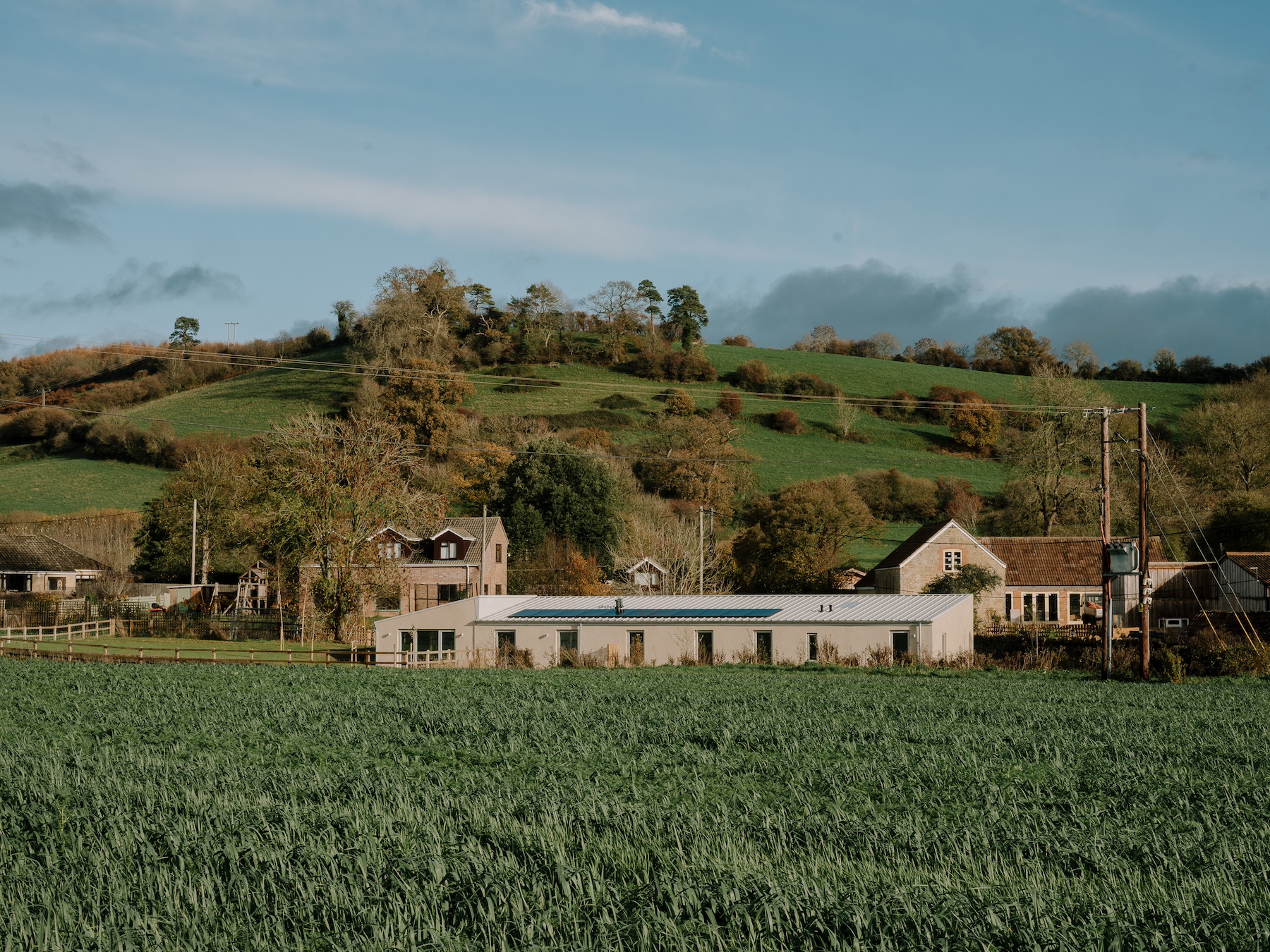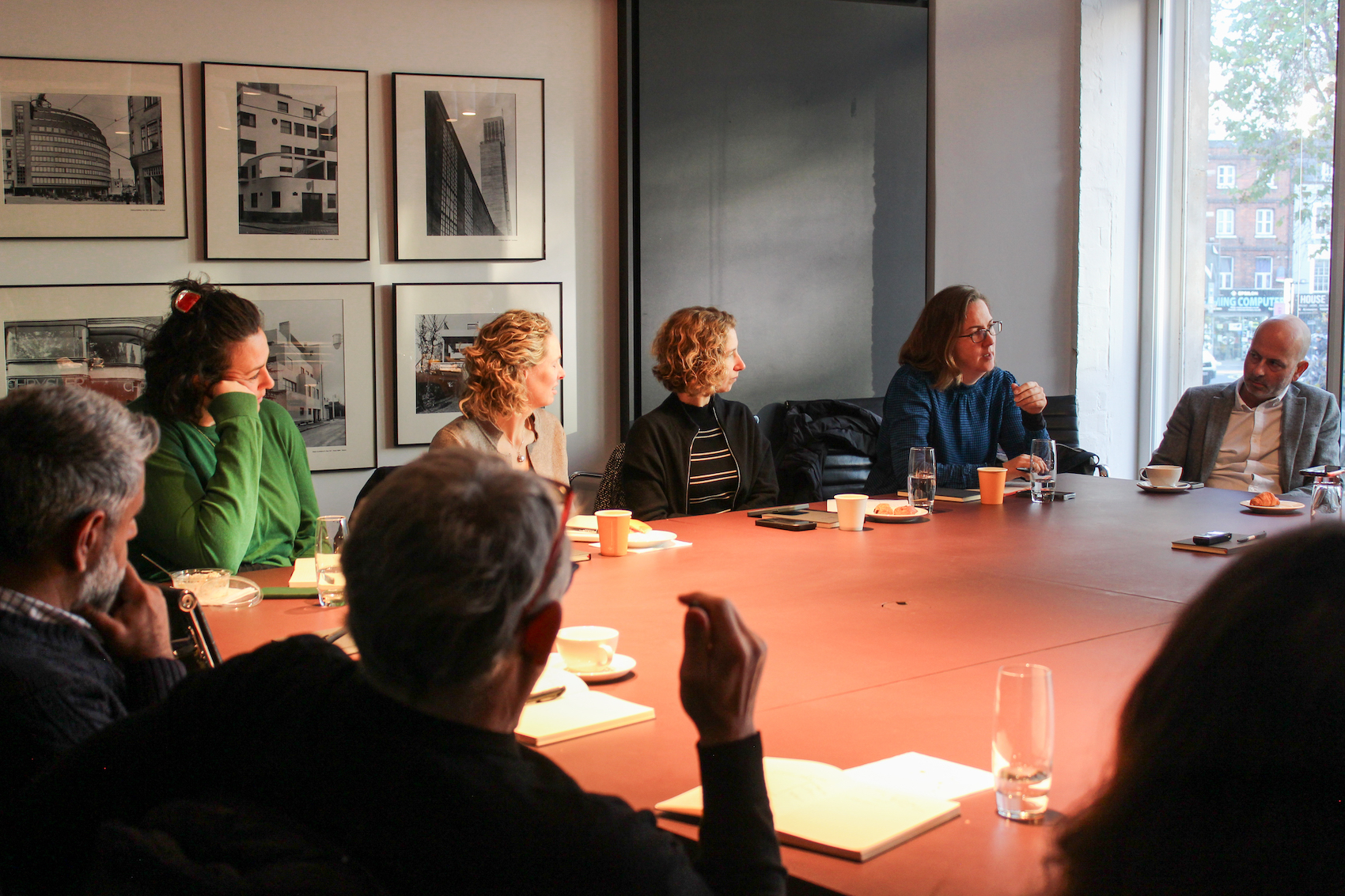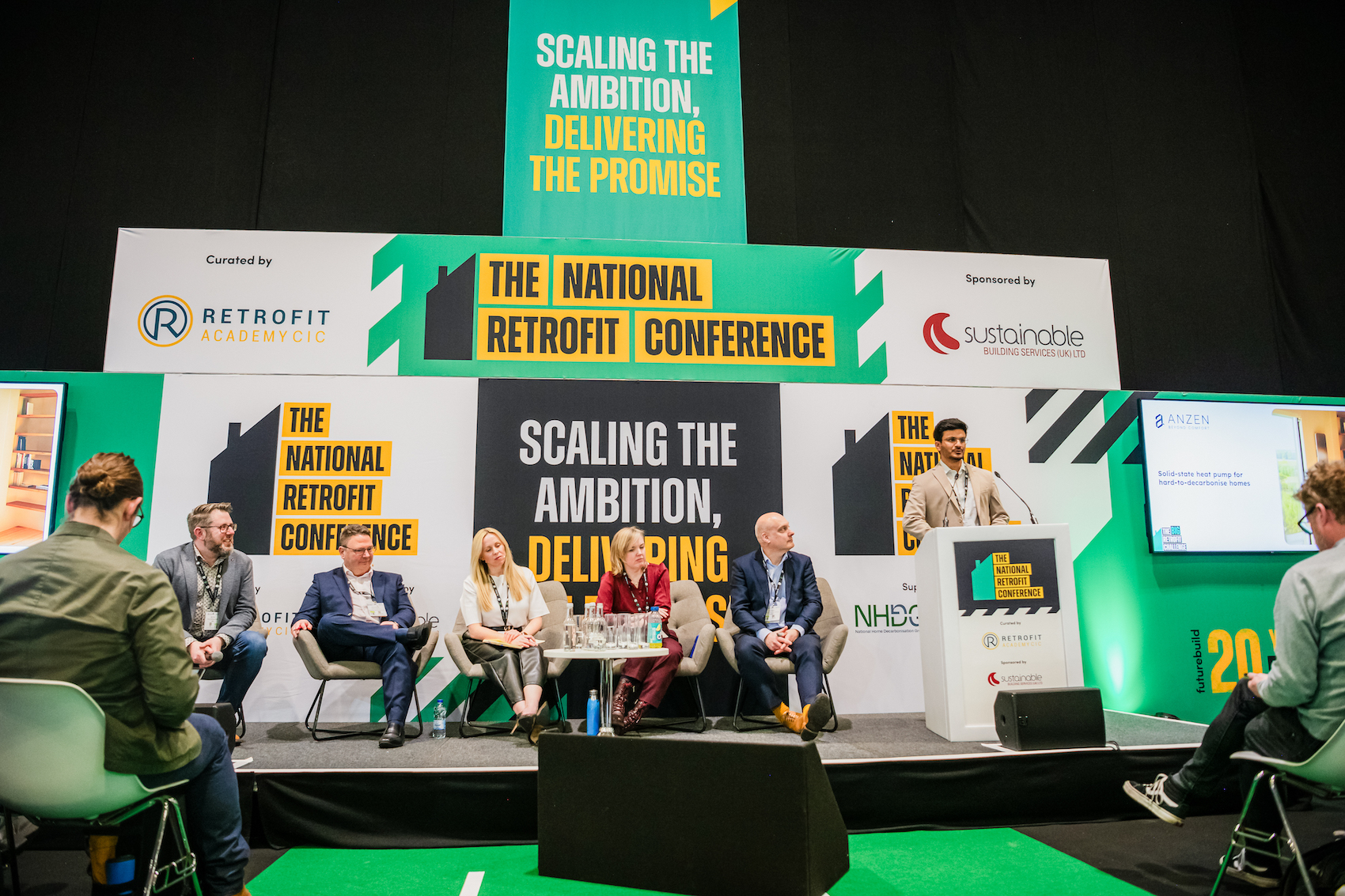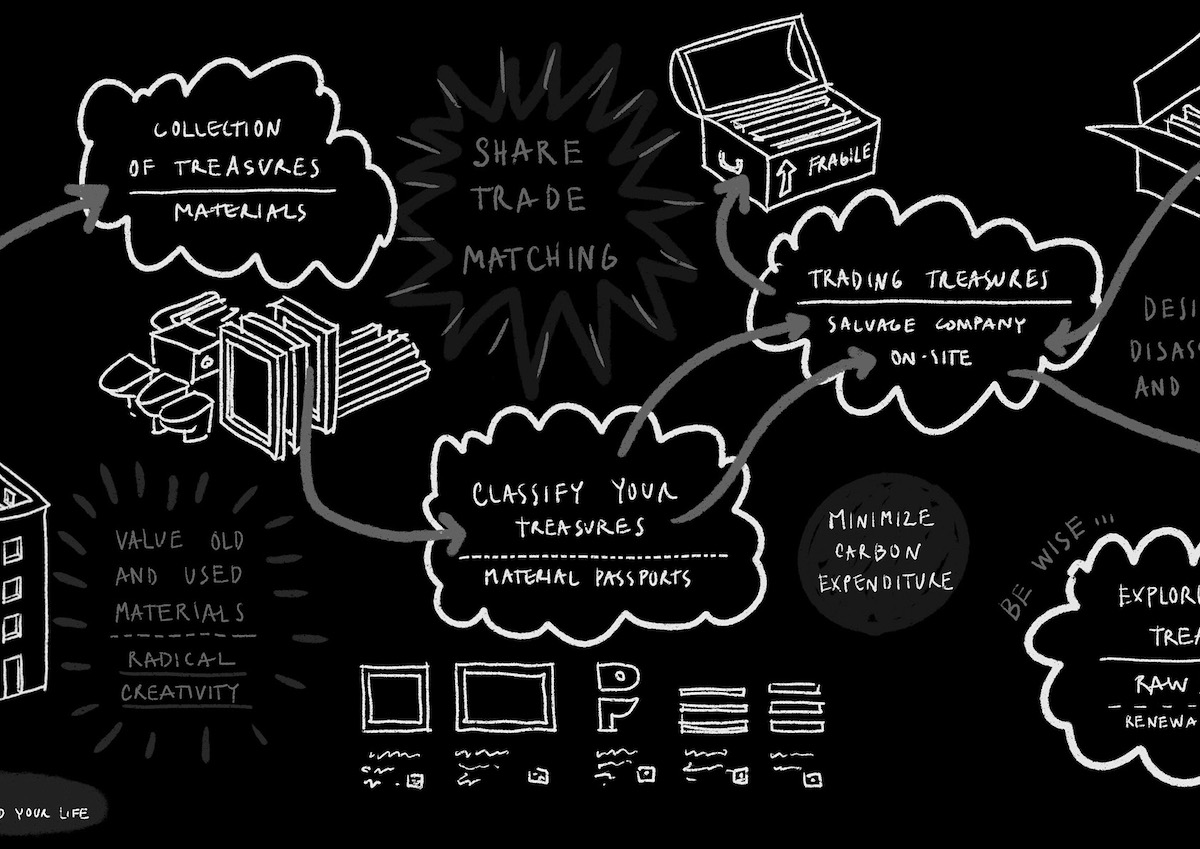AT speaks to Noa Barak at Sheppard Robson about what it means to be their Sustainable Materials Specialist, the importance of material circularity policy, and the wasted oyster shells she’s been monitoring at Broadway Market.
Noa photographed at Sheppard Robson in Camden, North London.
Sheppard Robson has been using responsible and sustainable materials for some time now. We have a long track record of projects that use mass timber, and our specialist interior design group, ID:SR, has been carefully scrutinising materials in projects for a long time. My role evolved out of the conversation around: ‘How can we do more?’ I was hired to ensure that we take the analysis of our material selection to the next level, improving our buildings’ overall impact. This involves the research of new sustainable and circular materials, information collation and presentation output to make sure that this knowledge is wide-reaching and helpful to our project teams. Working across architecture and interior design, I advise project teams on material improvements and wider holistic project considerations such as end-of-life scenarios, design considerations (disassembly/demountability) and embodied carbon impacts. To take our responsibility of tracking these sustainable materials to the next level, we’re working on creating a more accessible performance-based database for our designers to use. It is still in development, but we’re hoping it will be fully operational within the year.
My role encompasses architecture and interior design and is served in an advisory and practice-wide knowledge-sharing capacity. I’m lucky to work at a practice like Sheppard Robson, where there is a 57-person strong sustainability group that I can work closely with to discuss materials and products in various capacities relating to sustainability to gain an appreciation of the bigger picture. Having a central role dedicated to this technical specificity is integral to the future of the practice. There are many people within the practice that are interested and very, very experienced in the specification of materials; I am here to provide another level of advocacy and specialist support.
One material I’m excited about? Oh man! Tough question – there are so many. I’m firstly really excited about the development of policy and implementation around material circularity. Just as much consideration needs to be put into what’s existing as to what is new and innovative. There is a lot of change and problem-solving around circularity occurring within individual projects that we can all learn from, and I’m always excited to hear about an efficient takeback scheme or a company that provides services to take materials and make them into something new.
I’m also excited about the rise of natural material integration and innovation within building materials. I’m a big advocate of using more fringe materials to build with and thinking outside the box a bit when we need solutions to material problems. I’ve been watching oyster shells for a while; last year I asked an oyster shucker at Broadway Market what they do with the shells once people have disposed of them, and he said my least favourite word: ‘nothing!’. I wish I had the capacity to take them at that point and do something with them, but I missed that opportunity. The oyster industry creates a lot of waste, and the shells seem to be a very versatile material that can be used for both interior and exterior materials and products. Hoping to see more and more innovation from this and other natural materials in the future.
I’m interested in the choices we make as designers and practitioners that can have long-term effects on our environment. There is a time and place for both new materials and reliable existing products, but there is always room for improvement. This focus is also project dependent. Some projects allow more flexibility for innovation; our interior design and architectural teams are incredible at finding innovative materials, but because of building regulations, sometimes reliable materials are necessary to carry out a project in an efficient manner. My role is fixed at the point of evaluating whether an innovative material/product is preferable to a reliable one. Our database incorporates some established, reliable baselines that we have used to compare against innovative products to decide which suits the project brief more and whether it can be used for that project in some capacity – either as a replacement or in accompaniment to a reliable product.
We’ve been able to use mass timber on a variety of projects for the last 20 years. Projects such as Waingels School and Hardman Pavilion, have been very successful in terms of embodied carbon impact through the use of timber. We’re continuing to explore options of using rammed earth, and hemp, etc. but haven’t been able to implement it at scale like we have with CLT. Similarly, but at a component scale, our ID teams have been able to explore using bio-based materials on several projects including BBC Wales, and Deloitte.
Noa Barak
Sheppard Robson
London NW1














